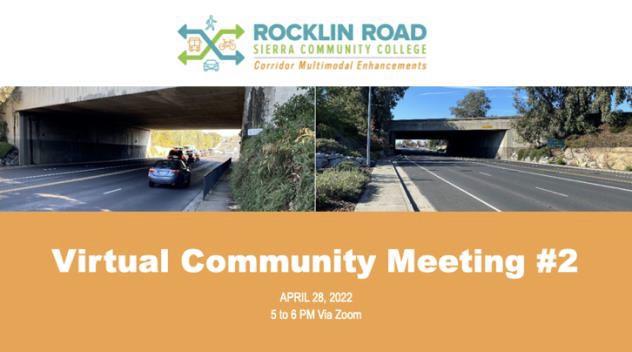Rocklin Road Sierra College Corridor Multimodal Enhancements
Virtual Community Meeting #2
On Thursday, April 28th from 5:00 – 6:00 p.m., the City of Rocklin held its second Virtual Community Meeting for the Rocklin Road Sierra College Corridor Multimodal Enhancements.
Download the Virtual Community Meeting #2 Summary


